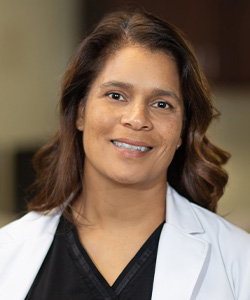Early breast cancer detection leads to better outcomes

October is Breast Cancer Awareness Month, a time to reflect on prevention, early detection and treatment of breast cancers. Approximately 1 in 8 women (13%) in the U.S. will develop invasive breast cancer at some point in their lifetime. Advances in screening and treatment have increased cure rates dramatically; however, the overall number of people diagnosed with breast cancer continues to rise a bit each year, particularly in women under 50.
Current Screening Guidelines
Most physicians, and major medical societies, recommend that women who are at average risk of breast cancer get screening mammograms every year starting at age 40. This is what I recommend and it has long been the recommendation of the American College of Radiology, the Society of Breast Imaging, the American Society of Breast Surgeons and the National Comprehensive Cancer Network.
Women who may have an increased personal risk of breast cancer should be offered risk screening tools by their physician to determine if they may need to begin screening before 40 or if they may need additional breast exams by MRI, instead of just mammograms
Mammograms
Mammograms, a series of several x-ray views of each breast, are the best test for detecting most breast cancers. They are currently the best tool we have for breast cancer screening. The purpose of screening is to catch cancer tumors as early as possible. Early breast cancers have a very high rate of cure, so there is a big advantage to finding the tumors when they are very small. Today’s modern mammogram techniques can detect breast cancer tumors that are about the size of a small bean. These tumors usually can’t be felt by someone until they are the size of a nickel or larger. Detecting these small tumors, long before they grow large enough to find with a breast exam, can mean detecting a cancer five or even 10 years before it would have been obvious. That gives you and your doctors a huge advantage in treating and curing the cancer.
Effective Treatments for Early-Stage Breast Cancer
Over the past two decades, cancer experts have researched ways to increase the success of breast cancer treatments. We have also spent time researching ways we can avoid overtreating women with breast cancer. The goal is for everyone to have the best chance of cure and the least chance of unnecessary medications or treatments and their negative effects.
As a result, cure rates for early-stage breast cancer are approaching 99%. Treatment for these women generally included a surgery to remove the tumor, a few weeks of radiation after surgery and hormone-based pills for several years. We continue to work to improve these treatments.
Advances in our labs allow us to test your personal tumor to see what treatments are best for you. In fact, these testing improvements have allowed cancer doctors to stop using any chemotherapy for most of the early-stage breast cancer patients.
Advances in radiation treatments have allowed us to offer shorter radiation plans, which require fewer appointments for women. Advances in surgery techniques have led to smaller, more focused, surgeries and fewer complications.
Stay Informed and Get Screened
Remember, breast cancer can affect anyone with breast tissue and is most common in women over the age of 50. Most women diagnosed with breast cancer report no family history of breast cancers. Women with no family history still need to have a screening mammogram every year, starting at age 40. Having no family history of breast cancer is not a safe reason to skip your screenings.
Early detection and better treatments are making a big difference in the fight against breast cancer. Stay healthy and spread the word about breast cancer screenings. Mammograms save lives.
Together, we can make a difference!
Dr. Lara Briseño Kenney is a board-certified Hematologist Oncologist. She sees patients at Bothwell Regional Health Center’s Susan O’Brien Fischer Cancer Center and her own practice, Leeton Medical. She graduated from the University of Missouri-Kansas City School of Medicine. After medical school, she served in the U.S. Army and was awarded a Bronze Star for her service. When not seeing patients, Dr. Kenney enjoys her small town, farm life in Clinton with her husband, three young sons and her horses.
